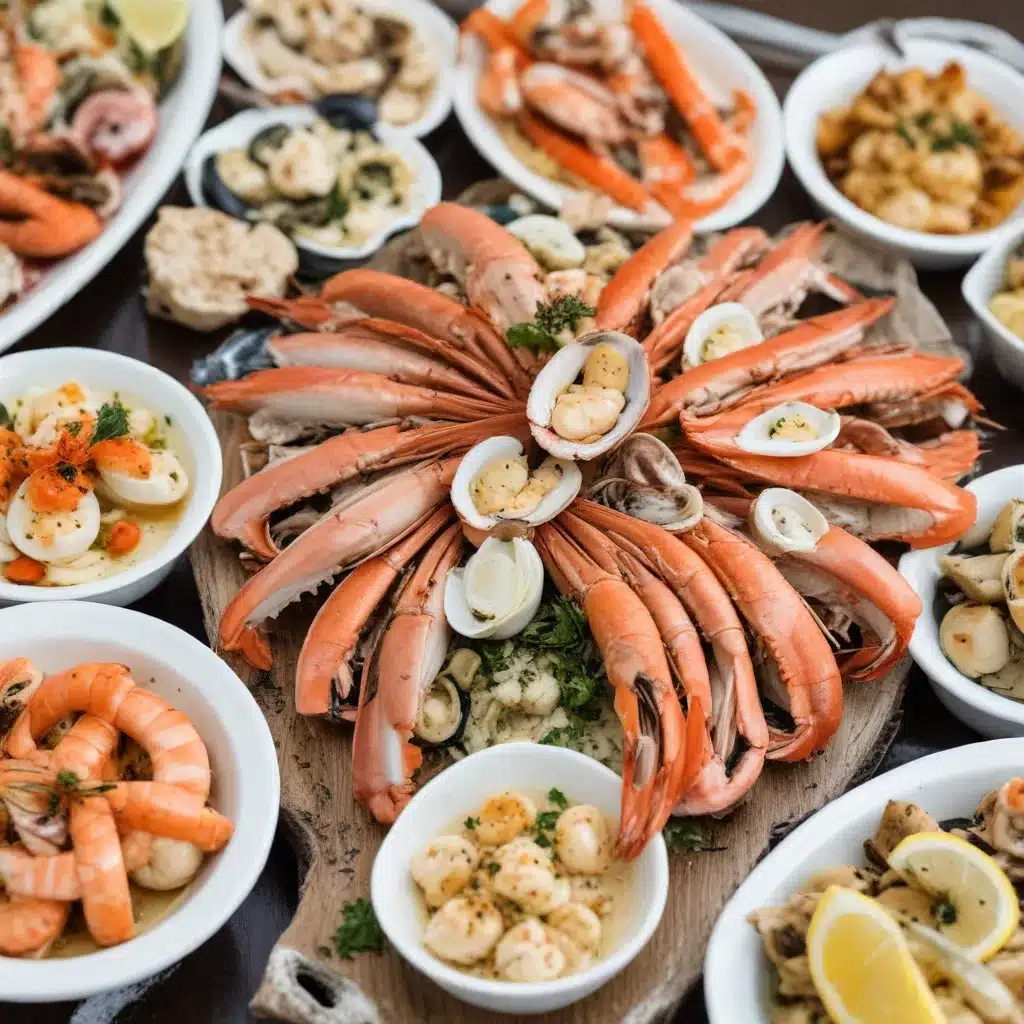
The world of coastal seafood cuisines is a captivating culinary journey, brimming with diverse flavors, vibrant traditions, and innovative techniques. From the sun-drenched shores of the Mediterranean to the rugged coasts of Scandinavia, each region offers a distinct gastronomic experience that celebrates the bounty of the sea.
Diverse Seafood Varieties
At the heart of these celebrated coastal cuisines lies an abundance of seafood – the lifeblood that nourishes both the local communities and the discerning palates of travelers. Cod, a ubiquitous and versatile fish, is a staple in many coastal culinary traditions, appearing in dishes ranging from classic fish and chips to the hearty cod chowder of New England. However, the seafood repertoire extends far beyond this iconic species, encompassing a diverse array of shellfish, finfish, and crustaceans, each with its own unique flavor profile and culinary applications.
Culinary Traditions and Techniques
Coastal cuisines have evolved over centuries, shaped by the rich cultural heritage and innovative culinary techniques of the regions they represent. In Italy, the art of seafood risotto showcases the creamy, comforting essence of Arborio rice, while the cioppino of San Francisco blends the robust flavors of tomato, garlic, and a medley of fresh-caught seafood. Across the globe, coastal communities have mastered the art of curing, smoking, and pickling to preserve the bountiful harvest of the sea, creating delicacies like the Nordic gravlax and the Japanese katsuobushi.
Regional Flavor Profiles
Each coastal region boasts its own distinct flavor profile, reflecting the unique terroir and culinary traditions of the area. The vibrant, sun-drenched cuisines of the Mediterranean revel in the use of olive oil, garlic, citrus, and herbs, while the rugged, windswept coasts of Scandinavia embrace the earthy, umami-rich flavors of smoked fish, dill, and fermented ingredients. Farther south, the bold spices and tropical fruits of the Caribbean lend a dynamic twist to seafood preparations, while the Pacific Northwest celebrates the clean, briny essence of its salmon, oysters, and Dungeness crab.
Sustainable Seafood Practices
As the world’s appetite for seafood continues to grow, coastal cuisines have taken the lead in promoting sustainable practices that ensure the long-term health of our marine ecosystems. Many chefs and restaurateurs are committed to ethical sourcing, working closely with local fisheries and aquaculture operations to provide the freshest and most responsibly harvested seafood. This commitment to sustainability not only safeguards the future of our oceans but also enhances the flavor and quality of the dishes they serve.
Innovative Seafood Dishes
While respecting the time-honored traditions of coastal cuisines, chefs are also pushing the boundaries of culinary innovation. Fusion dishes that blend global influences with local seafood specialties are captivating diners worldwide, such as the Korean-inspired seafood pancakes or the Mexican-style ceviche featuring local catches. Additionally, the rise of artisanal and small-batch seafood producers has spawned a new era of specialty products, from expertly cured and smoked fish to sustainable caviar and seaweed-based umami bombs.
Sensory Experiences
Coastal cuisines excel in engaging all the senses, creating an immersive dining experience that transports the diner to the very shores that inspired the dish. The aromatic profiles of freshly caught seafood, combined with the textural contrasts of crisp, charred exteriors and tender, succulent interiors, captivate the palate. Thoughtful presentation and plating further enhance the experience, often showcasing the natural beauty of the ingredients and the creative flair of the chefs.
Nutritional Benefits
Beyond the captivating flavors, coastal seafood cuisines offer a wealth of nutritional benefits. Omega-3 fatty acids, abundant in fatty fish like salmon and mackerel, are renowned for their heart-healthy properties and anti-inflammatory effects. Seafood also serves as a protein-rich and micronutrient-dense option, providing an array of essential vitamins and minerals that support overall well-being.
Seafood Foraging and Gathering
In many coastal regions, the connection to the sea extends beyond the kitchen, with locals and enthusiasts engaging in the ancient practice of seafood foraging and gathering. From tidal zone exploration to coastal rock pooling, these immersive experiences allow participants to connect with the land and sea, while cultivating a deeper appreciation for the ingredients that define their regional cuisine.
Culinary Tourism Opportunities
As the world becomes increasingly interconnected, coastal cuisines have emerged as a primary draw for culinary tourists seeking authentic and immersive experiences. Coastal culinary trails, seafood festivals, and destination-driven dining experiences invite visitors to delve into the rich tapestry of flavors, traditions, and stories that define these captivating regions.
The Evolution of Coastal Cuisines
Coastal cuisines are not static; they are living, breathing entities that evolve with the times, adapting to historical influences, sociocultural impacts, and the ever-changing climate. As we collectively face the challenges of sustainability and environmental preservation, coastal communities are leading the charge, exploring innovative ways to honor their culinary heritage while ushering in a new era of responsible and regenerative seafood practices.
Exploring the unique flavors of coastal seafood cuisines is an odyssey of discovery, one that invites us to savor the rich bounty of the sea, celebrate the ingenuity of coastal communities, and forge a deeper connection with the natural world that sustains us. Whether you’re a seasoned seafood enthusiast or a curious foodie, the journey ahead promises to be a delectable and enlightening experience. Dive in, and let the siren call of the coast guide you on this captivating culinary adventure. Visit Fish Tales Cafe to explore more of what the world of coastal seafood has to offer.

